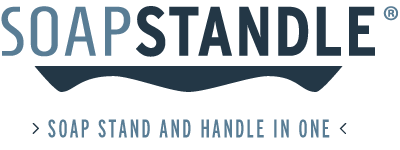
You know the routine: go and wash your hands before supper, go wash your hands after the bathroom, sing “Happy Birthday” to yourself, slowly. Oh, and don’t forget the soap! I can’t tell you how many times I sent my son back to the bathroom after sniffing his hands for remnants of soap odor when he just ran his hands under the water.
Marty Munson of Prevention, states that even with your upbringing and habits, only two-thirds of the general population washes up. It’s those that we watch leaving the stall and walking out that leaves us wondering what they touched for the rest of our visit.
To debunk some myths, here are the top 5 to make your hand washing a soapy experience.
Myth #1: You need hot water to clean your hands. Simply put: “no.” If you think you need hot water to sterilize, you are mistaken. Water must be 212 degrees Fahrenheit to sterilize hands, or plates and water only boils at 212 degrees. You may want to rethink putting your hands in a pot of boiling water to sterilize them. There is no difference in the cleaning power of water regardless of temperature states microbiologist Donald Schaffner, Ph.D., professor at Rutgers. What really matters is the time spent under the faucet, which is roughly 20 seconds or one “Happy Birthday” song.
Myth #2: Hand sanitizer is better than water AND soap. This is a tricky answer. It really depends on how dirty your hands are. IF you are dirty with stuff, use soap and water because the action of rubbing and rinsing loosens the bacteria, viruses and literal dirt off your hands. Soap is the vehicle of lifting, rubbing or friction assists in removing stuff and water takes it down the drain. Hand sanitizer would now have the best chance of working since the physical dirt is removed states epidemiologist David Berendes, Ph.D., M.S.P.H., of CDC’s Waterborne Disease prevention Branch. Use a least a 60% alcohol based sanitizer and rub and rub until your hands are dry.
Myth #3: A rinse-off is fine if you’re not that dirty. To be number specific, a single gram of feces can contain one trillions germs in addition to the millions of pathogens already on your hands before using the toilet. So that quick rinse will remove about 90% of the bacteria, but you will still be pretty germy leaving the restroom after you just used the door handle to leave. When you see that person leave, use a paper towel to open the door when you exit. Don’t have one, use some toilet tissue.
Myth #4: Air dryers vs. paper towels. Thomas Murray, M.D., Ph.D., of Connecticut Medical Center has a bottom line for your choices in the bathroom. Use a paper towel if available. It’s not necessarily “Green,” but it’s the best if you have a choice. UConn Health found that even after a good air dry, new bacteria can wind up back on your hands. Dryers stir up bacteria and may redeposit on your hands, but don’t fret. Most healthy people are going to be unharmed as long as you keep your hands off your face, out of your mouth and nose.
Myth #5: Bar soap vs. liquid soap. Soap is soap says the CDC. Bar soap sitting in a gooey dish even with germs cannot cling to your hands after washing. So liquid or bar will do the job, as long as it is soap to lift stuff off your hands. (See Myth #2)

